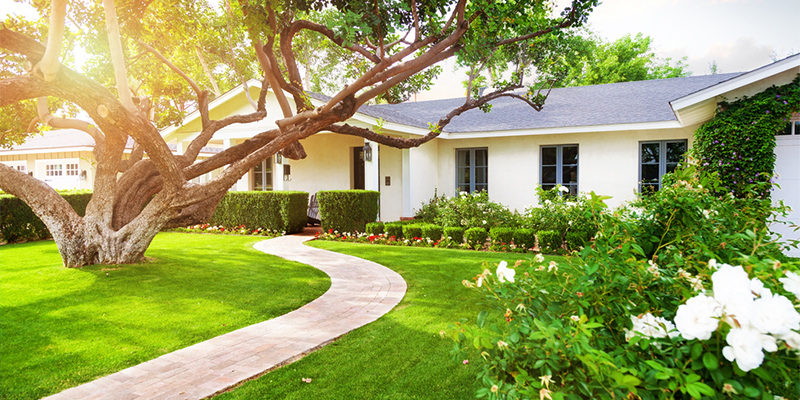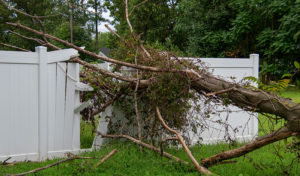Far too often, landlords and tenants find themselves arguing over who has to prune the trees in a rental property. Is the landlord responsible for tree trimming? Or does the tenant bear that obligation?
Is the Landlord Responsible for Tree Trimming? Find Out Below
One of the things that make rental properties appealing is good landscaping. That means well-kept flower beds, shapely hedges, mowed grass, and perfectly trimmed trees. And while some landlords and tenants have no problem maintaining the landscaping, others often get into fights about who should do the job.
When you own the home, you obviously need to trim the trees yourself. But, for rental properties, there is some debate. Landlords usually own the property and are responsible for maintenance, but it is the tenant who lives there and gets to enjoy the landscaping.
When it comes down to it, is tree trimming a landlord responsibility?
Who Is Responsible for Tree Trimming: Landlord or Tenant?
The question remains: Are landlords responsible for cutting trees? Or is the tenant responsible for tree trimming?
Generally, it is the landlord who should trim the trees. Landlords are typically responsible for maintaining the property, and landscaping falls under that. Unless the lease agreement states otherwise, landlords are responsible for pruning the trees in a rental property.
Some lease agreements, though, will outline tree trimming as one of the tenant’s responsibilities. In that case, tenants have to trim the trees themselves.
Landlords who want to transfer this obligation to their tenants must include the provision in their lease. Use specific terms such as “tree trimming” instead of general terms like “yard care,” as the latter may lead to confusion. Landlords must also inform their tenants of this obligation, along with other obligations, during the application process. This way, there are no misunderstandings or opportunities for dispute.
Who Pays for Tree Trimming: Landlord or Tenant?
Much like the responsibility itself, the financial obligation that comes with tree trimming also generally belongs to the landlord. Again, unless the lease agreement indicates that the tenant must shoulder the cost of tree trimming, landlords must pay for the service. After all, landlords have a duty to maintain the rental property.
Can You Trim Trees in a Rental?
Of course, tenants who want to trim the trees themselves usually have the freedom to do so. But, tenants must ask permission from their landlord first. It is best that tenants seek permission in writing to avoid potential disputes. Landlords, on the other hand, reserve the right to approve or deny a tenant’s request to trim the trees on their own.
When Is the Best Time for Tree Trimming at Rental Property?
Tree trimming is not a maintenance task that landlords must do every day. Trees grow over time, so their branches don’t always pose a risk. Landlords, though, should adopt a general maintenance schedule that includes tree trimming. Other instances that signal that it is time for tree trimming include:
- When the branches hang too low and become a safety hazard
- If the branches are damaged, diseased, or dead
- When the branches have started to rub against each other
- If the weight of the branches are beginning to compromise the tree’s overall structure
- When the branches are too dense or thick that they block natural light and air
- If the tree does not seem balanced anymore due to one side having too many branches and the other having too little
The best time to trim the trees is during the late winter months to early spring. It is also a good idea to trim the branches right before a thunderstorm or snowstorm. Harsh winds can blow weak branches off and cause them to hit nearby cars, sidewalks, windows, roofs, and even people.
Reasons to Trim Trees in a Rental Property
A lot of landlords view tree trimming as troublesome and time-consuming. And while that may be true, it is also necessary. Here are the benefits of regular tree trimming and maintenance.
1. Prevents Pests
Dead and overgrown trees can attract all sorts of pests. When branches start to hang too low, these pests can find their way through windows and into the rental unit. Before long, occupants will have a full-grown pest infestation on their hands. Landlords will then need to pay for pest control as well as yard maintenance.
Worse yet, if the branches invite termites into the property, they can wreak havoc and cause immense damage. This will lead to even costlier repairs.
2. Reduces the Risk of Damage
Low-hanging branches can easily break off and damage parked vehicles. If they are taller than the roof of the property, they can damage the roof, too. Dead or diseased limbs also tend to be weaker, so a gust of wind could snap them off and hurl them towards glass windows.
3. Keeps Tenants Safe
Overgrown or diseased branches not only pose a threat to the property but also to tenants and guests. Branches can just as easily fall and injure someone on the premises, resulting in potential liability on the landlord’s part.
4. Maintains Curb Appeal
Perfectly trimmed trees add to the overall appeal of the rental property. When an owner’s yard looks unkempt, tenants are less likely to want to rent their unit. It signals to them that the landlord does not care a lot about maintenance. Additionally, if the owner decides to sell the property in the future, dead trees can contribute to a lower resale value.
5. Prolongs Tree Life
Just like humans, trees rely on their health to remain strong and lush. But, unlike humans, trees can’t take care of themselves. Removing dead or diseased branches prevents the disease from spreading to other parts of the tree. Regular tree trimming also wards off any pests that may want to take shelter. This helps lengthen the tree’s lifespan.
Hiring a Professional vs Doing It Yourself
Landlords can probably handle trimming smaller trees. But, for larger ones, it is best to call a professional service for help. When taking the DIY approach, it is important to remember to wear protective gear such as gloves and goggles. If the job requires the help of a ladder, it is better to leave the job to the pros.
Contrary to popular belief, tree trimming does take skill and knowledge. It is not something that landlords can accomplish using just a hack-and-slash technique. Poor pruning can actually cause more harm to the tree than good.
Is the Landlord Responsible for Tree Trimming? Answered!
In general, landlords do shoulder the responsibility of tree trimming since it falls under maintenance. The only exception is when both the landlord and tenant have agreed that it is the latter’s responsibility. In that case, make sure the lease agreement reflects that.
In need of a property management company? Start your search for the best one in your area with the help of Rental Choice’s online directory.
RELATED ARTICLES:
- Is Landlord Responsible For Fallen Tree?
- The Ins And Outs Of Rental Property Maintenance and Repairs
- 7 Renters Rights Every Tenant Should Know





 Company
Company